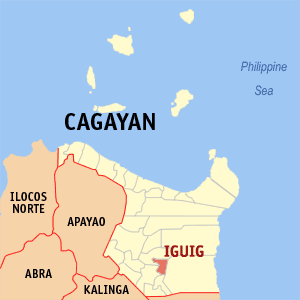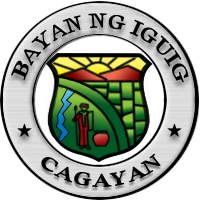
“THE TOWN OF IGUIG was founded by REV. AMBROCIO DE LA MADRE DE DIOS, O.P. ON DECEMBER 28, 1607.” The native name of the town is “IHIG and tradition has it that it was the name of the chieftain of the village which the Spaniards made into a “Pueblo” on December 28, 1607, and the Dominicians accepted as a “mission” on April 16, 1608 with Santiago Apostol as the patron saint.
Iguig is the birthplace of MAGALAD who had gone down in history with his name misspelled as “MAGALAT” leader of the early Cagayanos who resisted Spanish domination. He died fighting for a cause in which he believed.

Iguig is one of the 28 municipalities of the province of Cagayan. It is approximately 500 kilometers from Metro Manila and 17 kilometers north of the provincial capital city, Tuguegarao.
Presently, Iguig has 23 barangays among which its population are unevenly distributed. The native or ethic people in this municipality are the Itawes who are theorized to be descendants of wave of Indonesian migrants 2,500 to 3,000 years ago. The present socio-cultural pattern of the inhabitants is a blending of several ethic cultures-Itawes, Ybanag, Ilocano, and Spanish.
Iguig takes special pride for having had as a Parish Priest, Fr. Francisco De Cappilas, O..P who was recently beatified and venerated among the blessed. The father did a martyr in China.
WHEN TO GO: The best time to visit the municipality of Iguig is during summer and Lenten Season.
HOW TO GO: The municipality of Iguig is approximately 517 kilometers North of Metro Manila. You can take the modern and comfortable air-conditioned buses. This 12-hour trip from Manila passes through the provinces of bulacan, Nueva Ecija, Nueva Vizcaya, Caraballo Mountains, Isabela and the Cagayan, Provincial Capital City , Tuguegarao City.
GETTING AROUND: Local transport within the Municipality of Iguig varies from jeepneys, mini buses, vans, tricycles and calesas which are available at the municipality’s thoroughfares.




